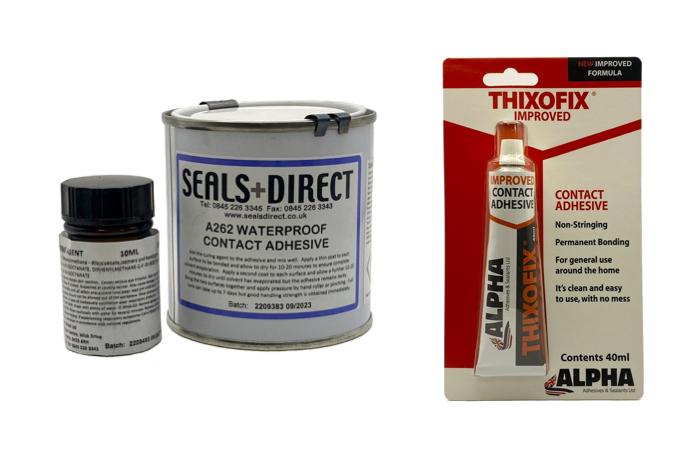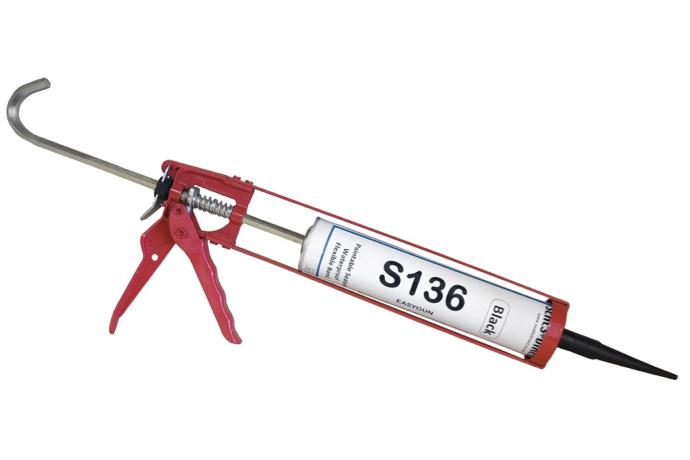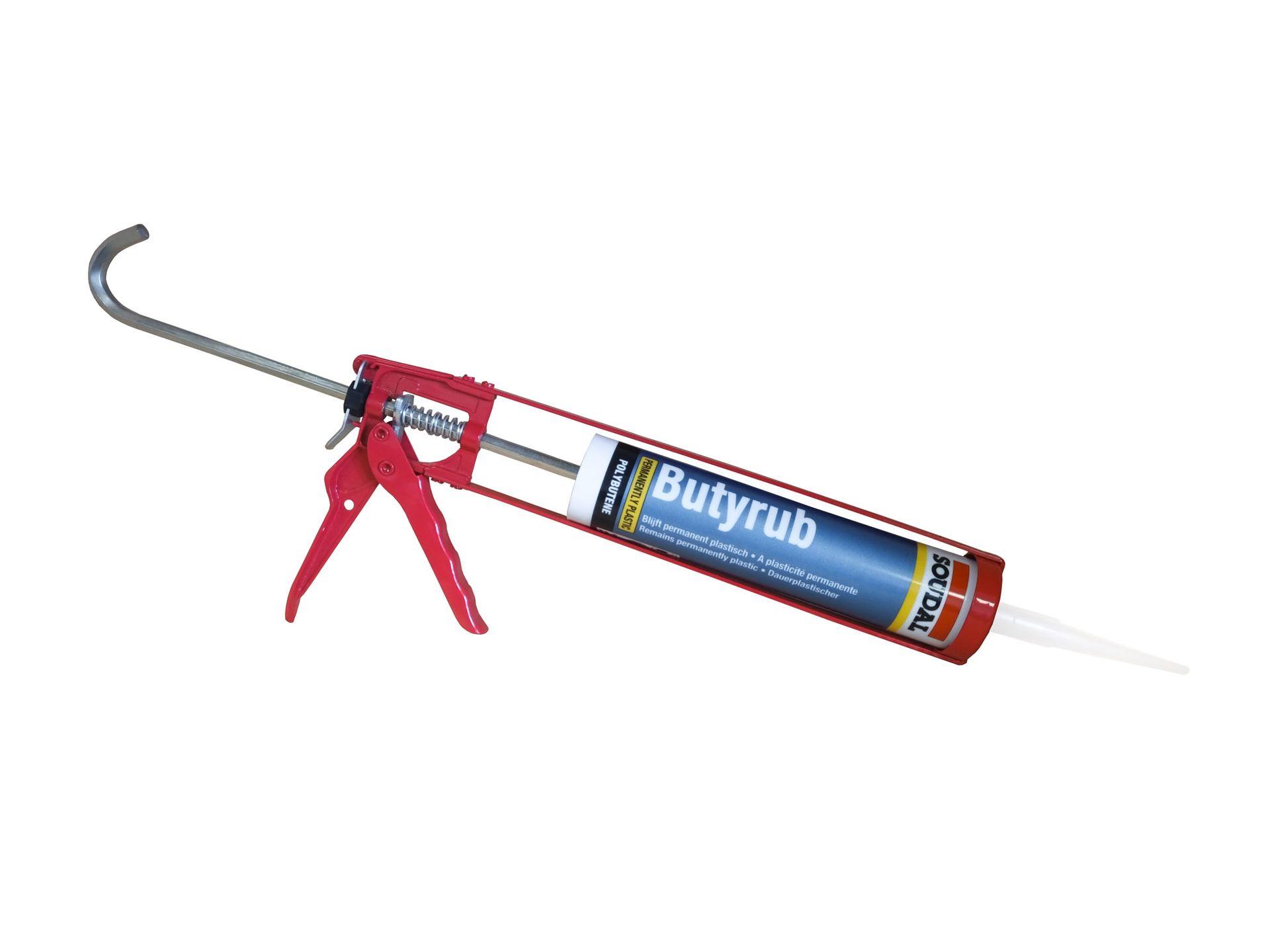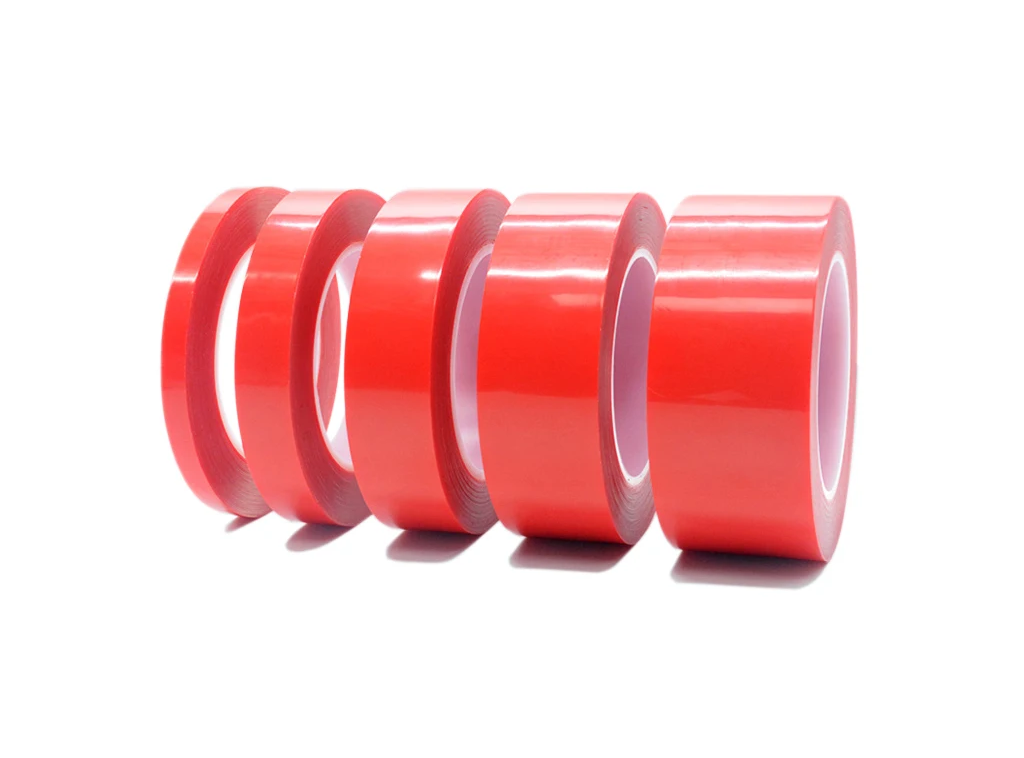We supply a range of adhesives, sealants and tapes suitable for a wide range of rubber materials, applications and environmental factors. Different adhesives do different things and selecting the best product is essential for creating a strong, reliable and long lasting bond. Contact adhesives offer good instant grab adhesion, polyurethane sealants have a good chemical resistance, non-setting mastic creates flexible joints and silicone sealants are good for high temperature applications. This guide explains the difference between each of our adhesives and makes recommendations of how to select the best product for your rubber sealing application.
With most adhesives, good surface preparation is essential to ensure a strong long lasting bond. When bonding rubber we recommend that you abrade the surface with sand paper and then degrease it with a solvent, such as IPA, acetone, MEK, toluene or a methylated spirit. It is not advisable to use oil based substances, such as white spirit. Ensure that the other substrate you are bonding the rubber to is dry, free of dust and grease free.
Contact Adhesives for Rubber Applications

Contact adhesives provide a very strong and long lasting bond.
They provide an instant grab so cannot be moved or repositioned after the two
surfaces have been brought together. When using contact adhesives, we recommend
that you start by applying one coat of adhesive to each surface and allow it to
fully dry. You should then apply a second coat to each surface and, when touch
dry, press the two parts together.
2 Part Waterproof Contact Adhesive (A262 - This neoprene contact adhesive is supplied in a 250ml tin with 9g curing agent. It covers an area approximately 0.5 square metres and can be used to bond rubbers and rubber coated fabrics such as neoprene, Hypalon and natural rubber. It is regularly used within the automotive, marine and industrial environments where a fully waterproof adhesive is required.
Thixofix Contact Adhesive (A139) - This is a multi-purpose adhesive designed to bond laminated plastics and rubber to wood, metal, fabric and most other substrates. It is supplied in 40ml tubes and has a consistency similar to non-drip paint.
Polyurethane Sealants for Rubber Applications

Polyurethane is commonly used where a rubber-like permanently elastic bond is required. It offers good weather and chemical resistance so is commonly used in marine, automotive and industrial environments. This adhesive takes approximately 24 hours to fully cure, so can be moved and repositioned unlike contact adhesives.
Polyurethane (S136) - Our black Polyurethane is supplied in a 310ml cartridge and can be used to bond most materials, such as rubbers, polyester, plastics, metal and glass using a caulking sealant gun. It is black so offers a neat sealing solution when bonding black rubber products.
Silicone Sealants for Rubber Applications
Silicone sealants are often used when you need to stick a rubber product to glass. They are also used to bond silicone rubber profiles as the only adhesive which adheres to silicone is silicone. Silicone is a flexible sealant which offers durability, flexibility and resistance to water. This product is often supplied to individuals working in the automotive, marine and industrial industry sectors.
White Marine Grade Silicone Sealant (S137) – This is a high quality white silicone sealant suitable for the marine environment. It is supplied in a 310ml cartridge and can be applied to most surfaces using a caulking sealant gun.
Clear Marine Grade Silicone Sealant (S138) – Our clear silicone sealant is suitable for the marine environment. It is supplied in a 310ml cartridge and can be easily applied using a caulking sealant gun.
Non-Setting Bedding Butyl Mastic

Non-setting butyl mastic is commonly used where a flexible joint is required. It has an excellent adhesion to most surfaces, including rubber, wood, brick, concrete, glass and metal. As a non-setting material, it is flexible and highly conformable so can be easily applied around irregular shapes and corners. It is commonly used within the caravan and automotive industry for bedding external attachments such as rail bars, where a flexible material is required to absorb vibrations associated with travelling.
White Soudal Butyrub Non-Setting Butyl Bedding Mastic (S5199) – This is a white non-setting mastic suitable for sealing applications that require a flexible sealant. It is supplied in a 310ml cartridge and can be easily applied using a caulking sealant gun.
Black Soudal Butyrub Non-Setting Butyl Bedding Mastic (S5200) – Our black non-setting mastic suitable for sealing applications that require a flexible sealant. It is supplied in a 310ml cartridge and can be easily applied using a caulking sealant gun.
White Seamseal CV Non-Setting Butyl Bedding Mastic (S3285) - This is a white non-setting mastic suitable for applications that require a flexible sealant. As this product contains white spirit, it not recommended for use with rubber seals. It is supplied in a 310ml cartridge and can be easily applied using a caulking sealant gun.
This material is also available as a non-setting butyl tape.
Adhesive Tape for Rubber Applications

Adhesive tapes are commonly used for a wide selection of bonding and sealing applications. They are available in a range of sizes and can be used for bonding most rubber products to other substrates. Adhesive tapes are beneficial for smaller runs where you only need to secure a short length.
Self-Adhesive Hi-Tack Scrim Tape - Our scrim tape is available in two widths; 12mm and 25mm. It is a hi-tack solvent acrylic scrim tape that is comprised of an open mesh which adds dimensional stability. It can be applied to most surfaces by peeling off the backing paper and sticking in place.
Self-Adhesive Clear Acrylic PET Tape – This clear adhesive acrylic tape is available in three widths; 12mm, 25mm and 50mm. It is a high bond doubled sided tape that can be applied to most smooth and slightly textured surfaces. Acrylic tape takes approximately 48 hours to achieve maximum adhesion.
The coverage of polyurethane, silicone and bedding mastic will be dependent on the size of the joint. The larger the bead, the lower the number of metres. The following guide details the coverage for different joint sizes.
JOINT SIZE
METRES PER 310ML CARTRIDGE
3 x 5mm (15 square mm)
5 x 5mm (25 square mm)
10 x 5mm (50 square mm)
10 x 10mm (100 square mm)
15 x 10mm (150 square mm)
20 x 10mm (200 square mm)
25 x 10mm (250 square mm)
For further guidance on choosing the best sealant for use in a marine environment, we highly recommend speaking to Boat Renovation People.